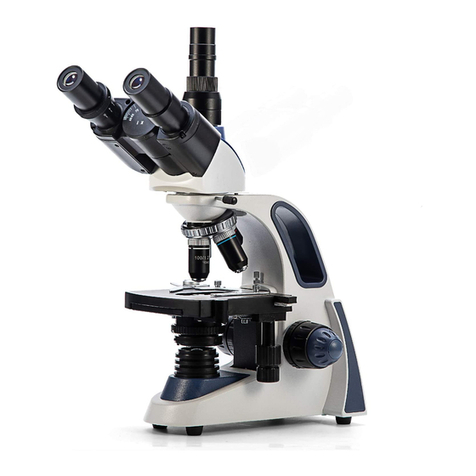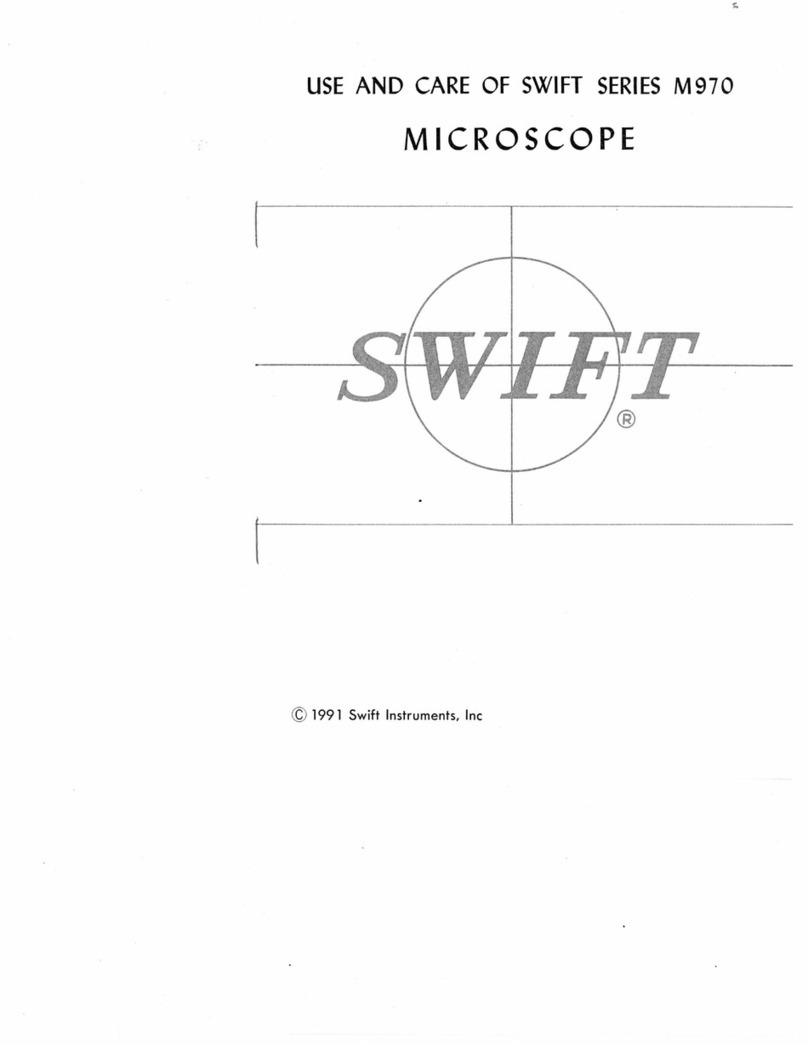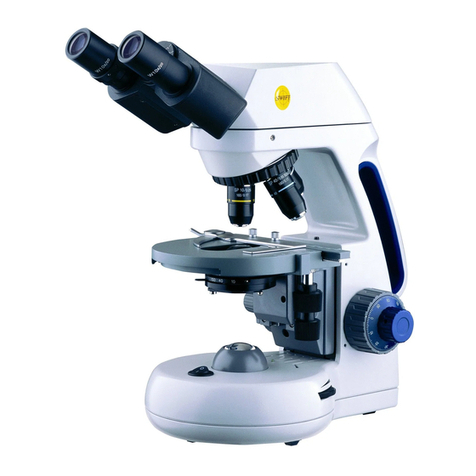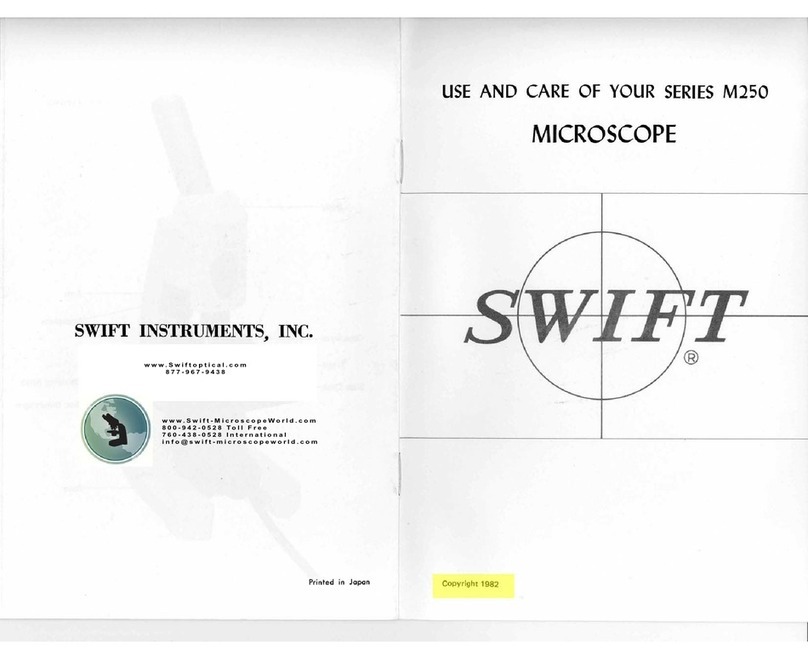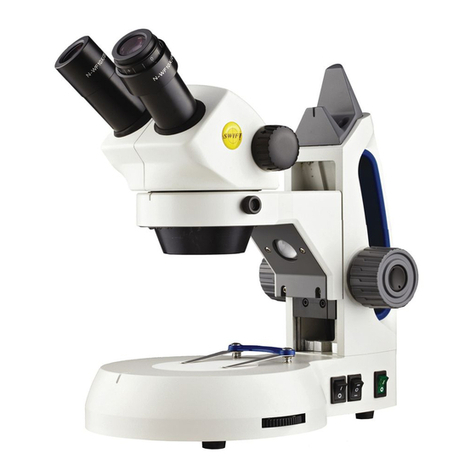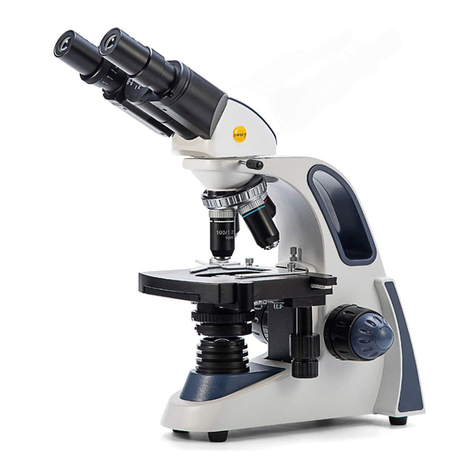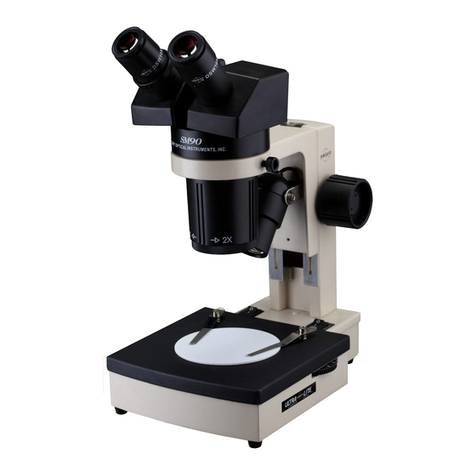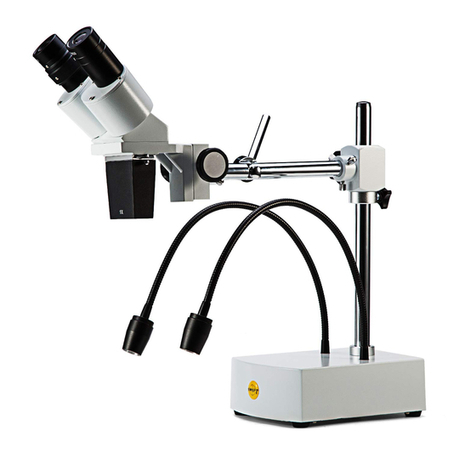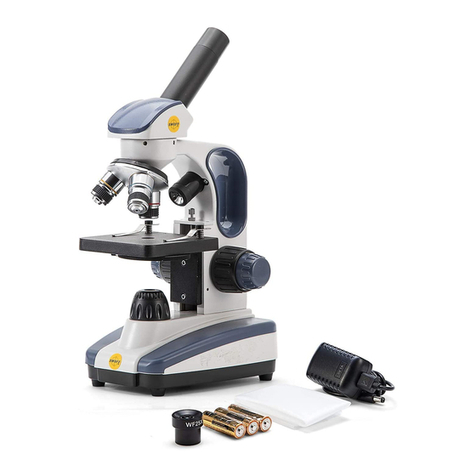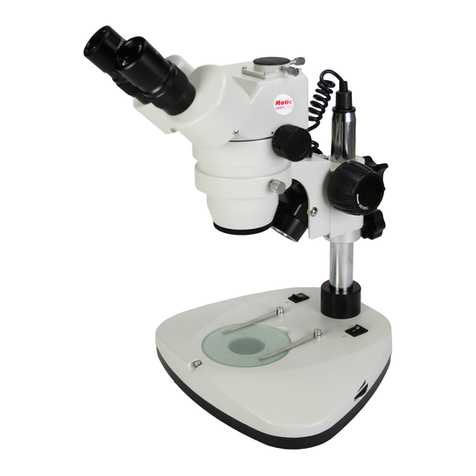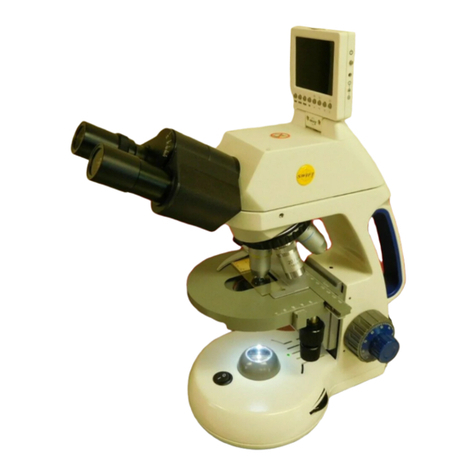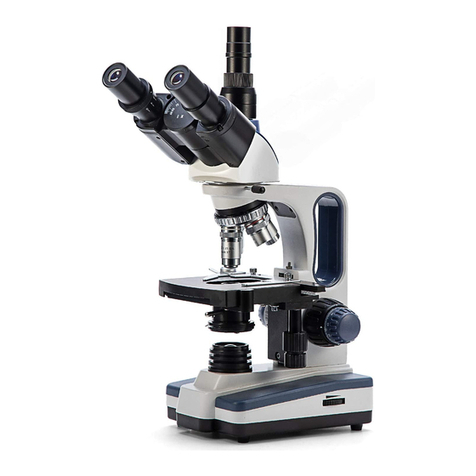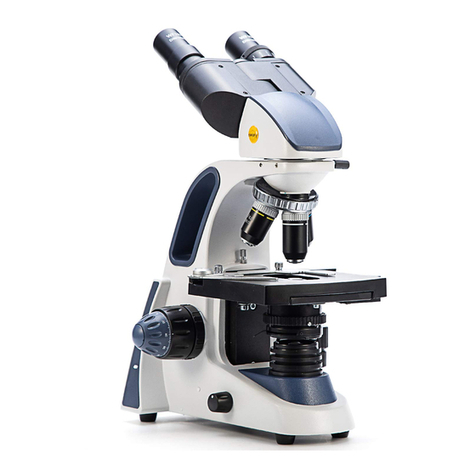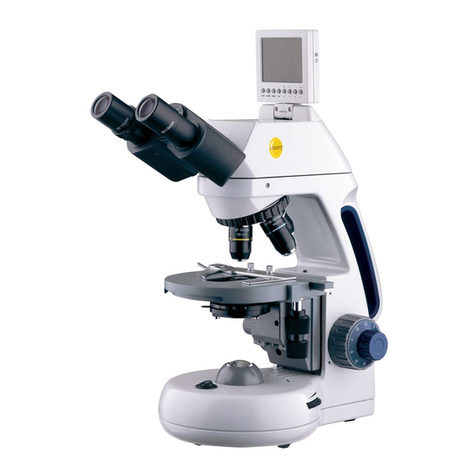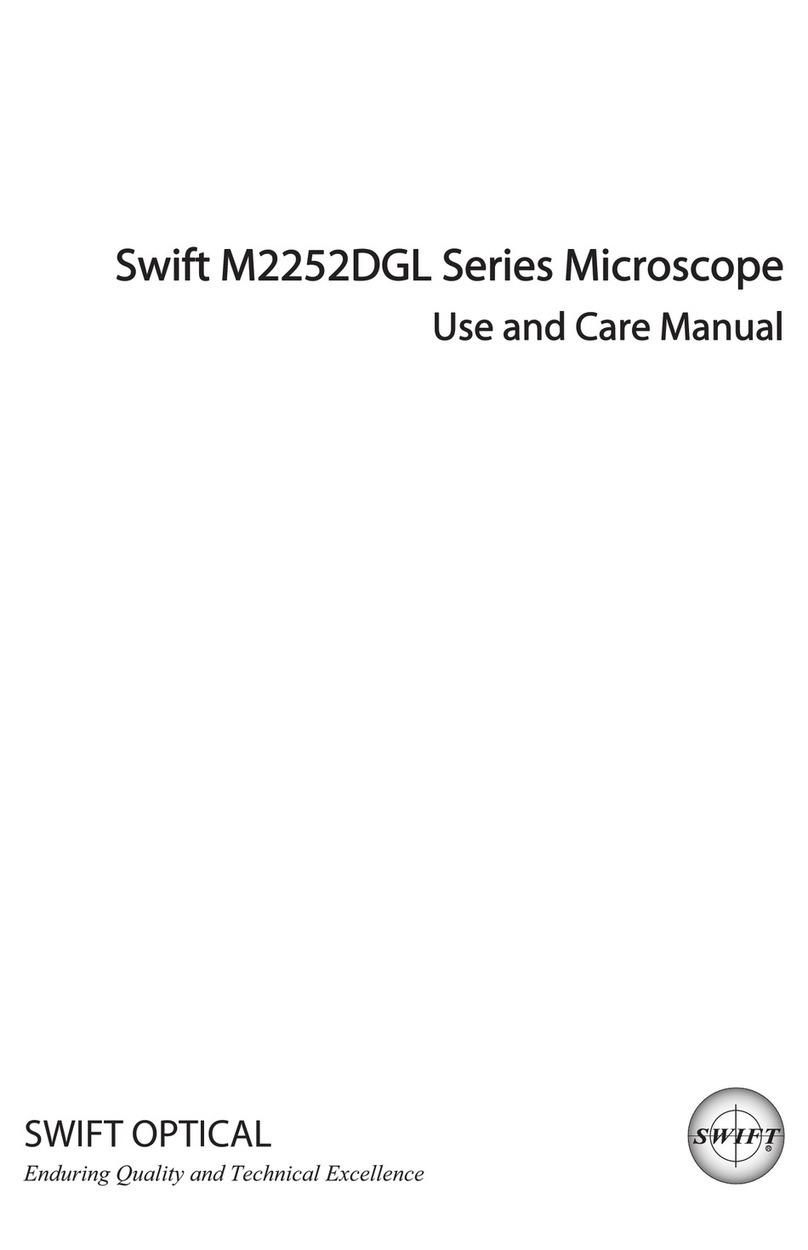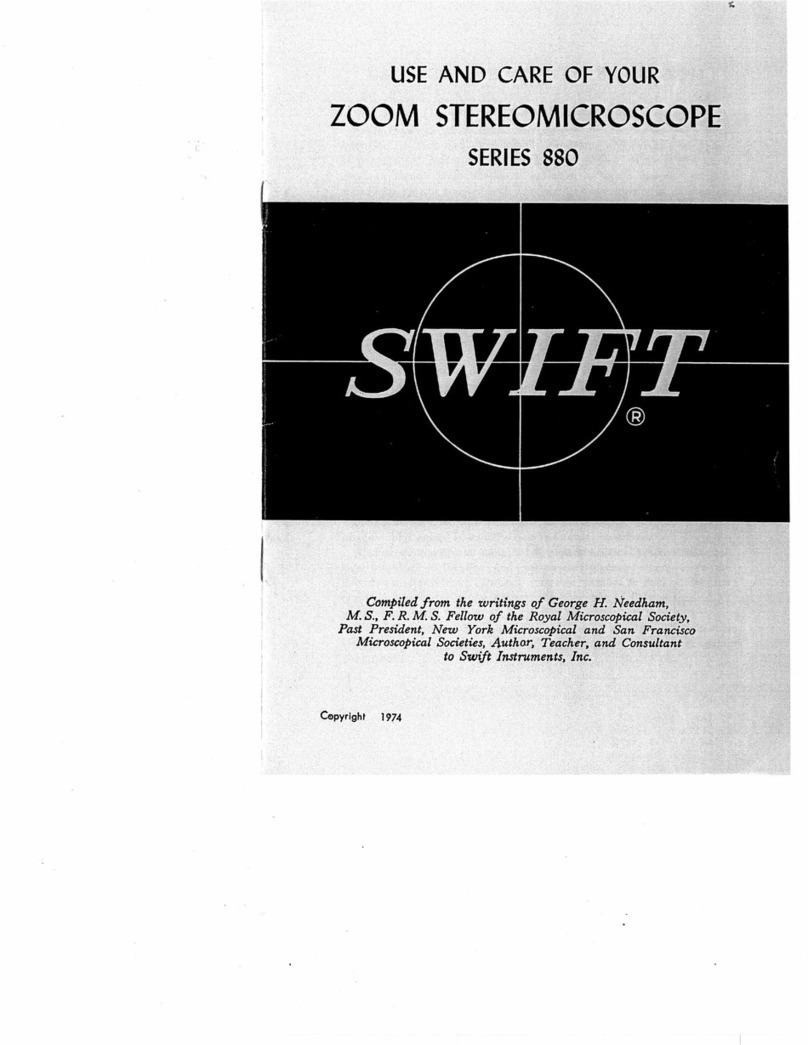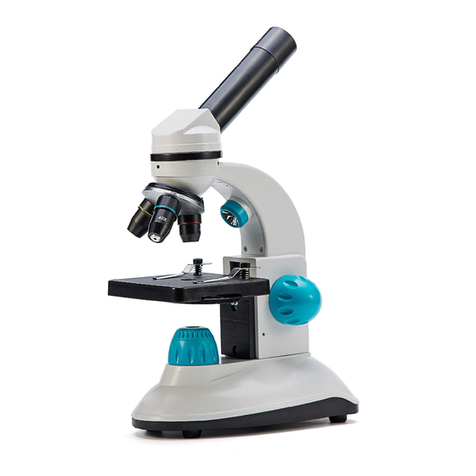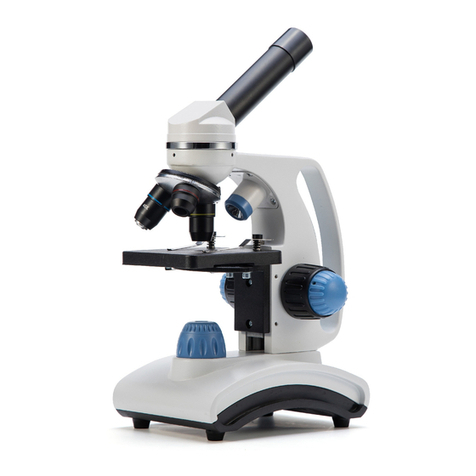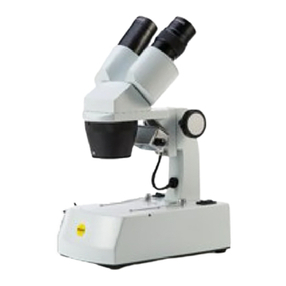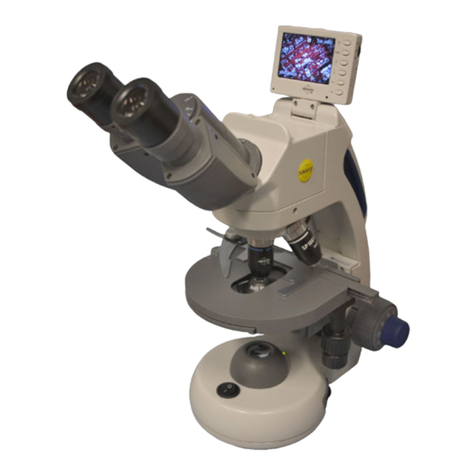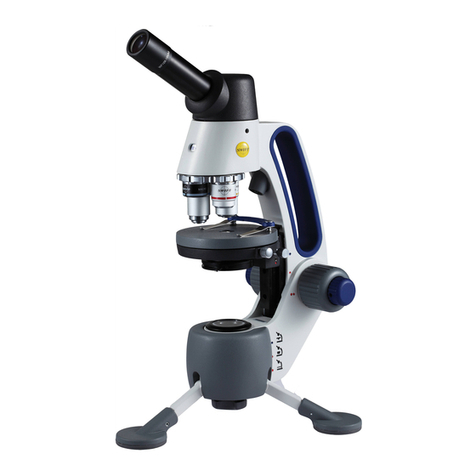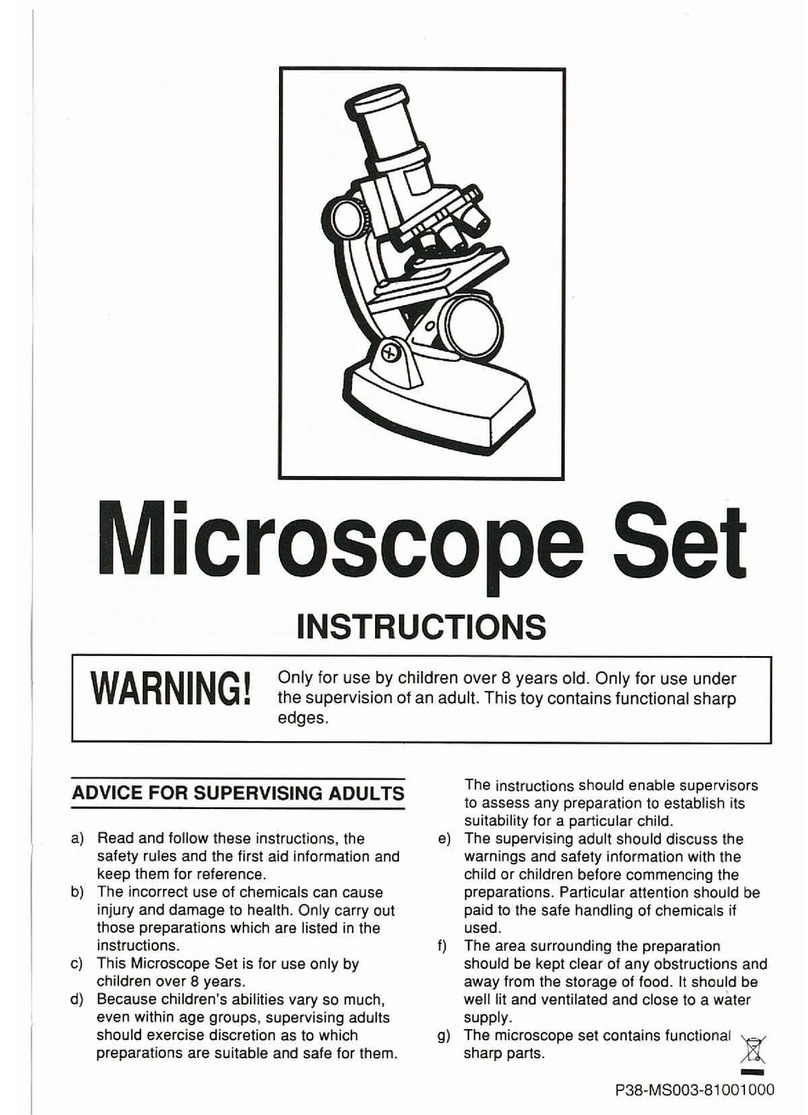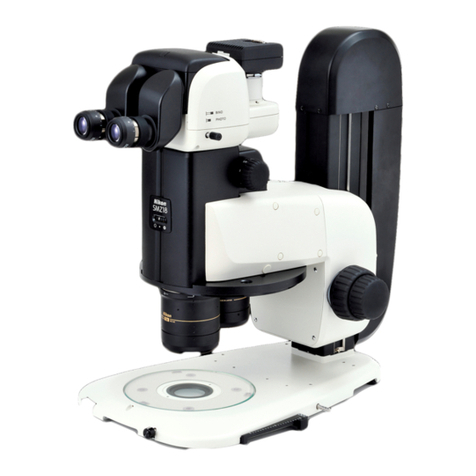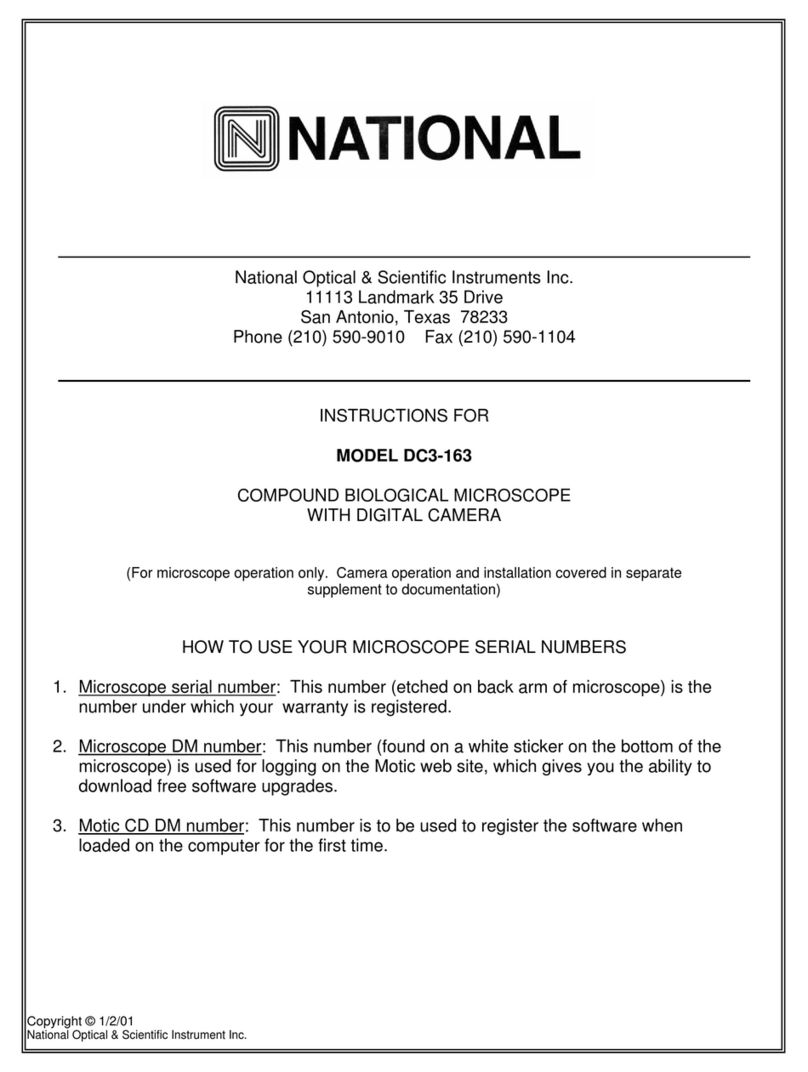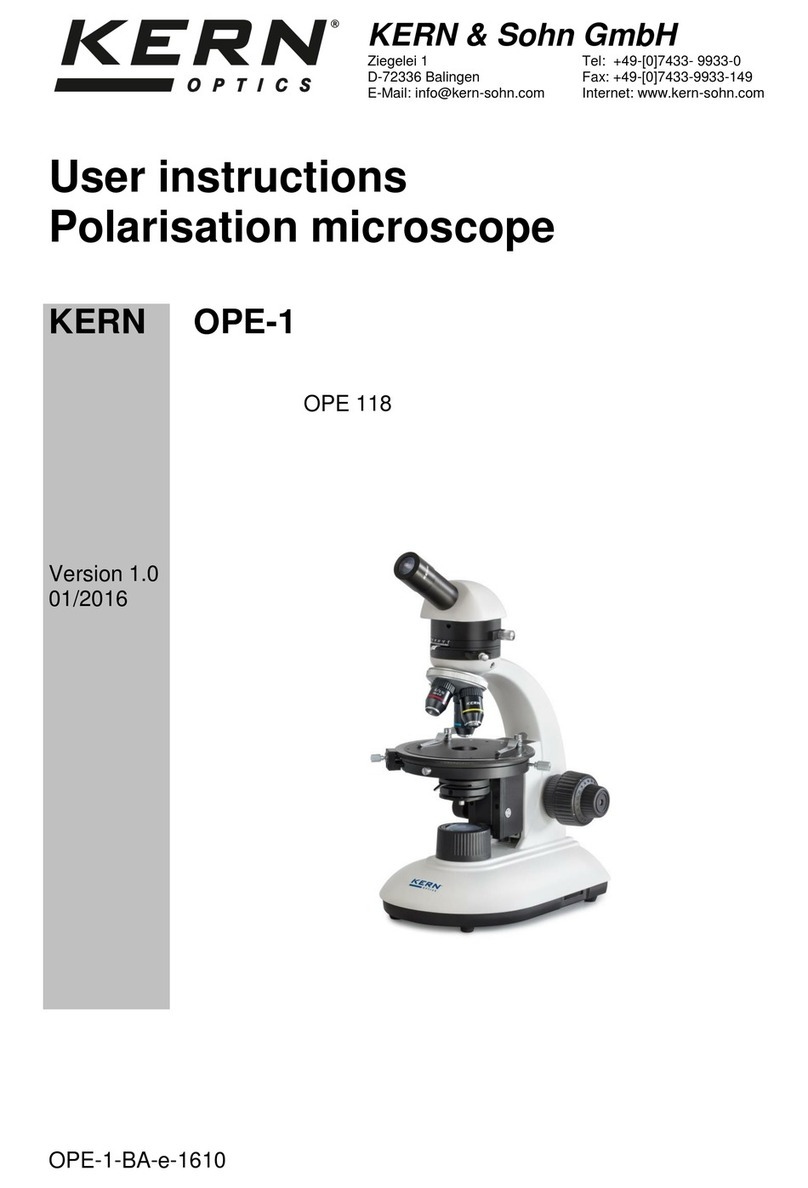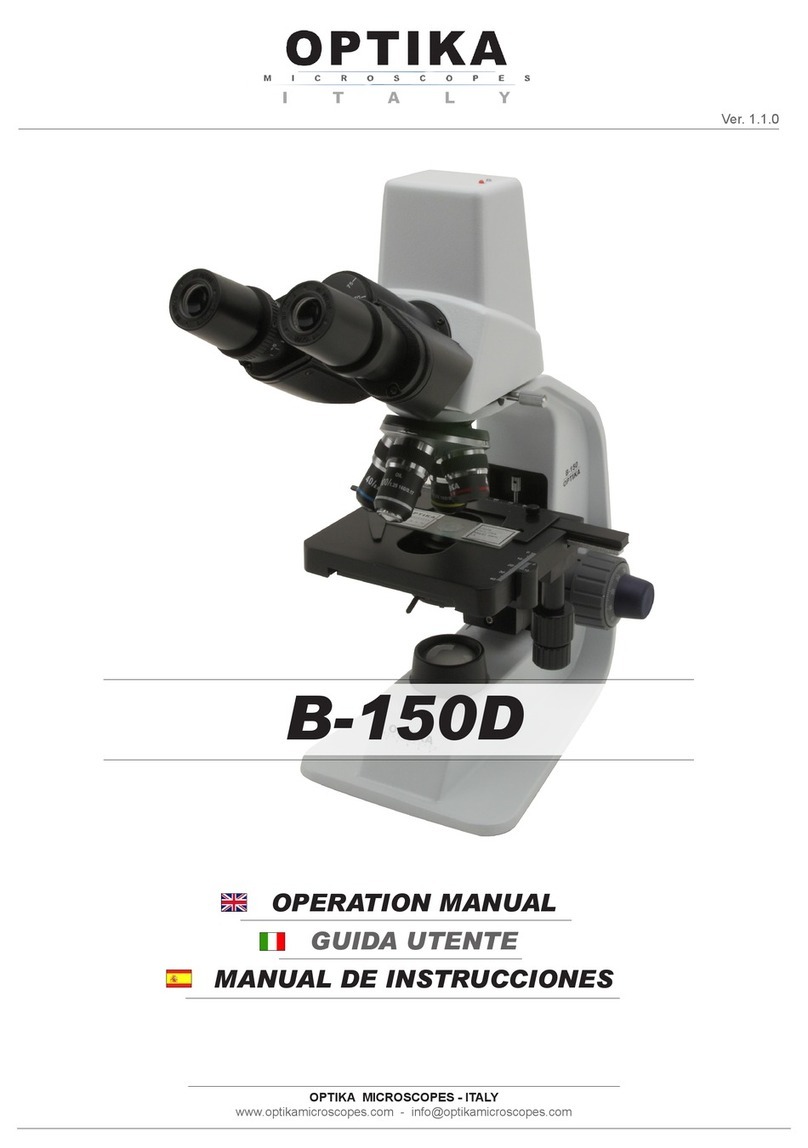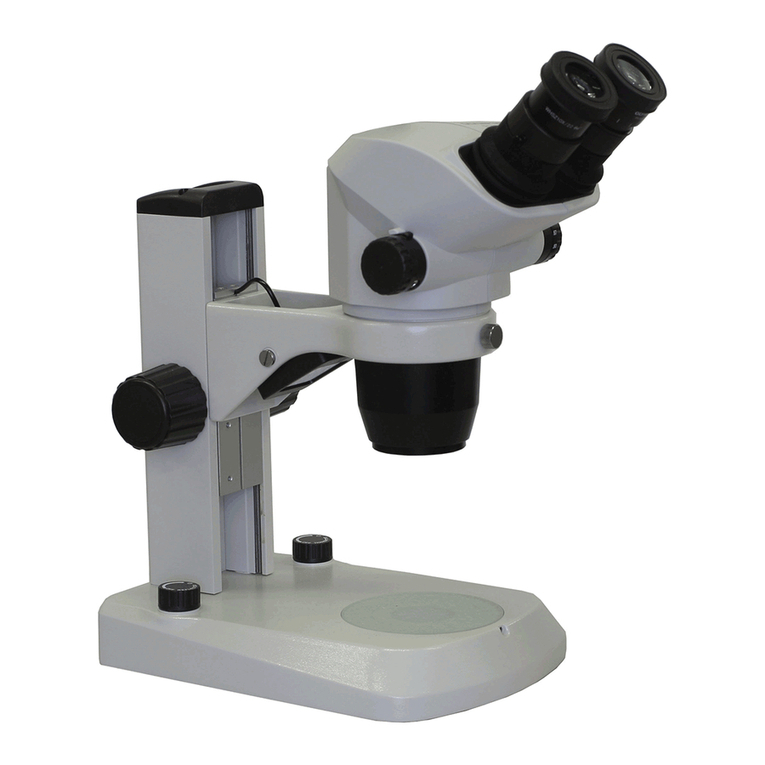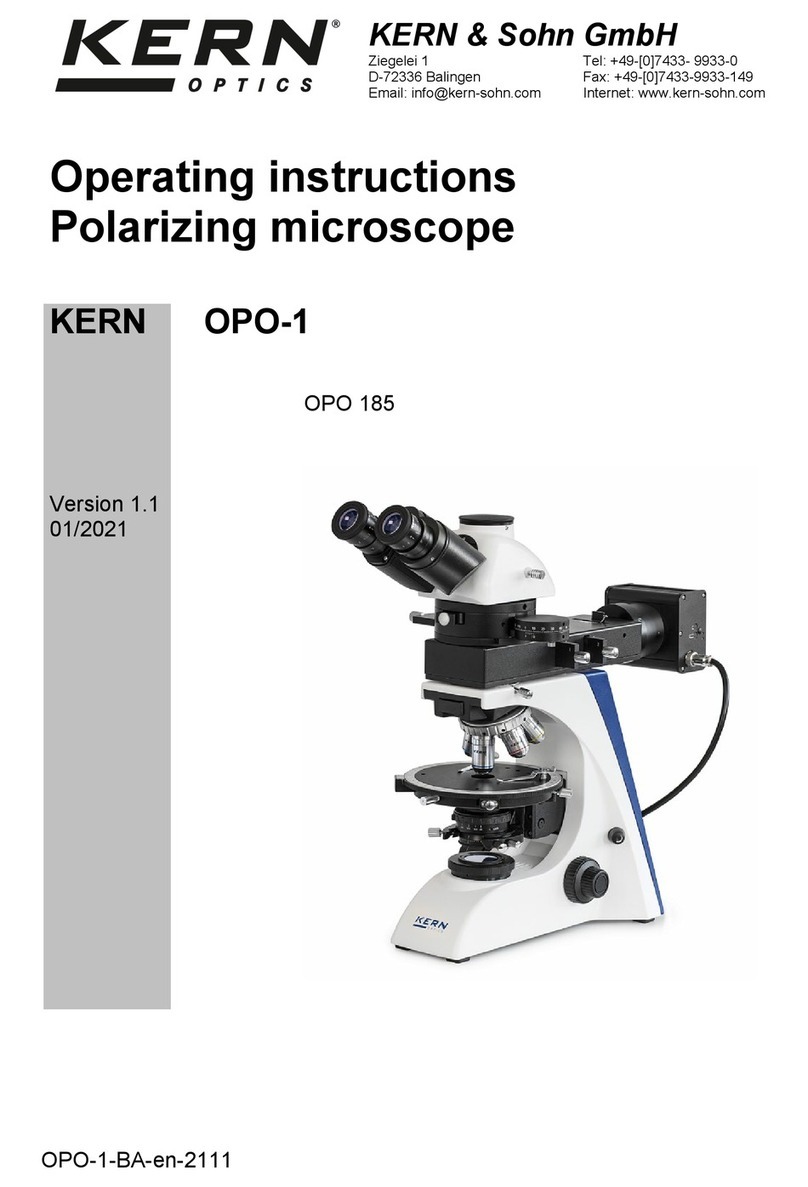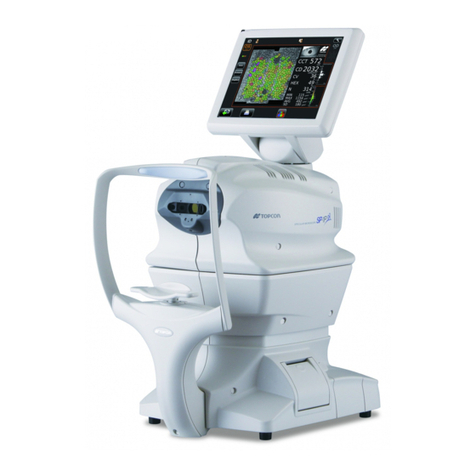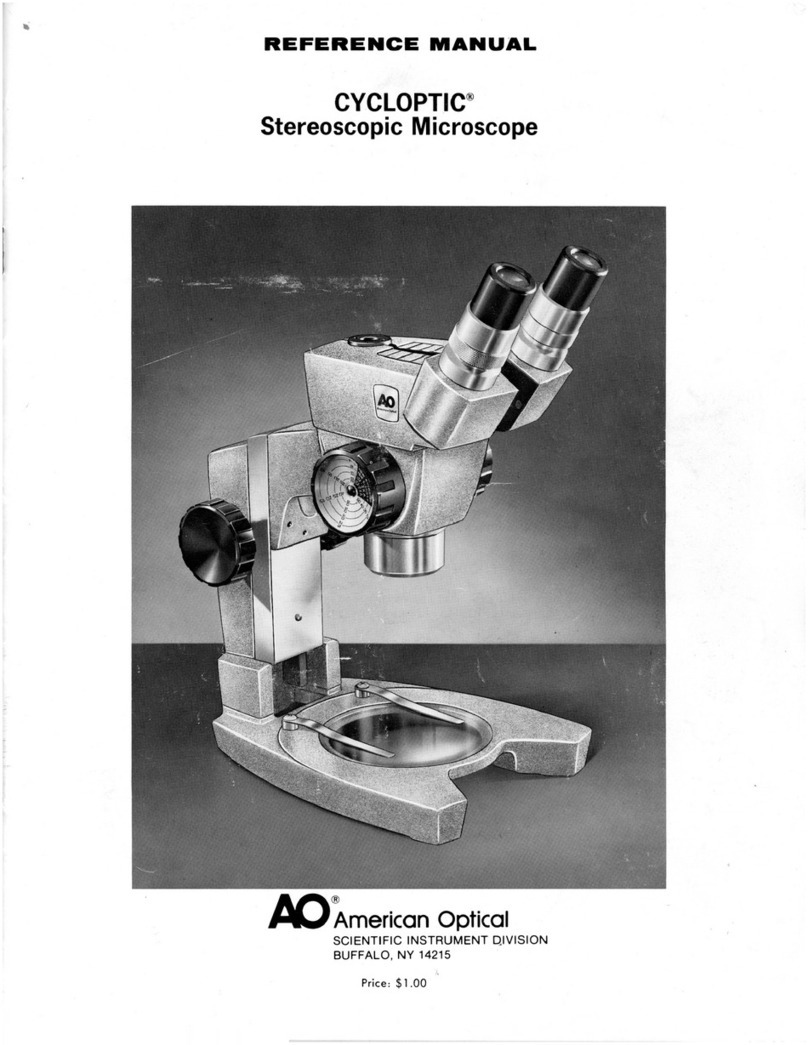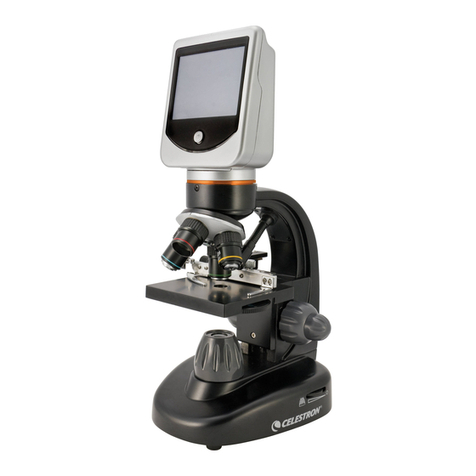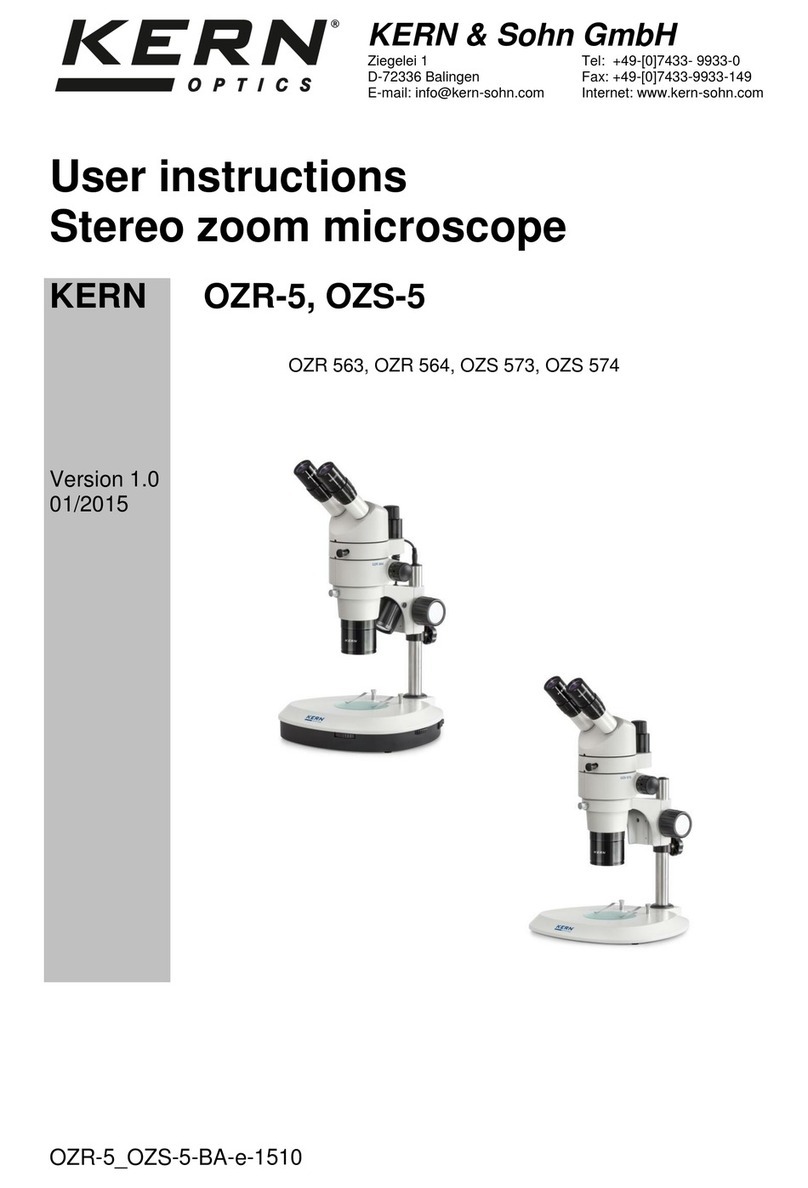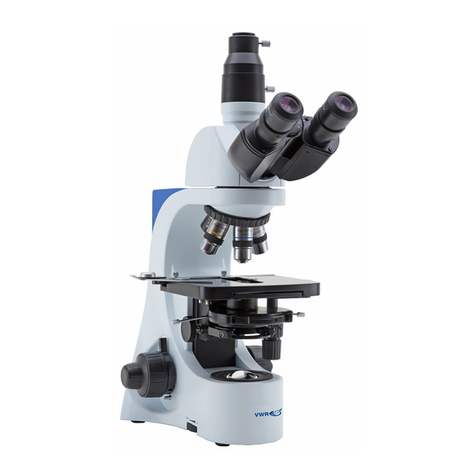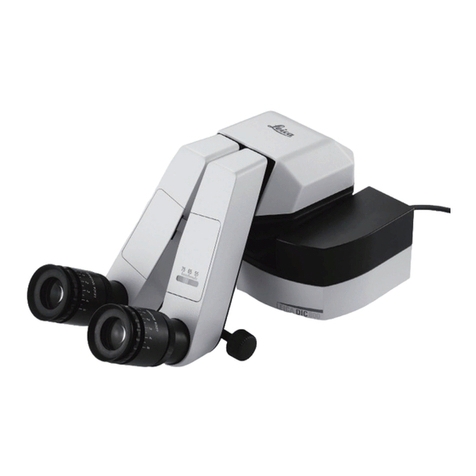8
4. Grasp the eyepiece tubes and move them either closer together
or farther apart, to change the interpupillary distance to obtain
a clear image. Note, if two separate images are observed, the
eyepiece tubes are too far apart and should be moved together.
If two overlapping images are seen, the eyepiece tubes are too
close together and should be moved apart.
5. Close your left eye and adjust the focus controls so the image is
in sharp focus, while viewing with the right eye only.
6. Close your right eye and while viewing with the left eye
only, adjust the diopter ring on the left eyetube to bring the
image of the specimen into sharp focus. The optical system is
now adjusted to your particular vision.
7. Rotate the black magnification knob to lowest magnification.
Only minor refocusing using the focusing control knob should be
required. Your microscope is now parfocalled.
SERVICE AND CLEANING
Use and store your instrument in a dry environment. When not
being used, microscopes should be stored with dust covers in place
and illuminators turned off. Avoid direct sunlight, high
temperatures, moisture, smoke, and fungus. Your Swift stereo
microscope is designed to function satisfactorily with only ordinary
maintenance. The instrument should be periodically serviced by a
qualified, authorized service technician, who will clean, re-
lubricate and perform routine adjustments. Eyepieces should be
cleaned as often as necessary to allow unobstructed viewing. Clean
the eyepieces by brushing away dust particles using a soft camel
hair brush or with air pressure, then moistening the lens by
breathing onto it. Wipe the lens carefully with quality lens tissue. If
dirt or other foreign matter still remains, it may be necessary to use
water or optical cleaner (eyeglass or camera lens). Note: the lens
tissue should be moistened, not saturated, for cleaning, after which
the lens should be dried using a quality lens tissue. Painted surfaces
should be cleaned with soapy water or mild non-abrasive cleaners
and a soft cloth. Do not use solvents on painted surfaces.
Unauthorized personnel should never disassemble lens assemblies or
other precision components. For information regarding service,
contact your local authorized Swift dealer or Swift customer service
at (877) 967-9438.
